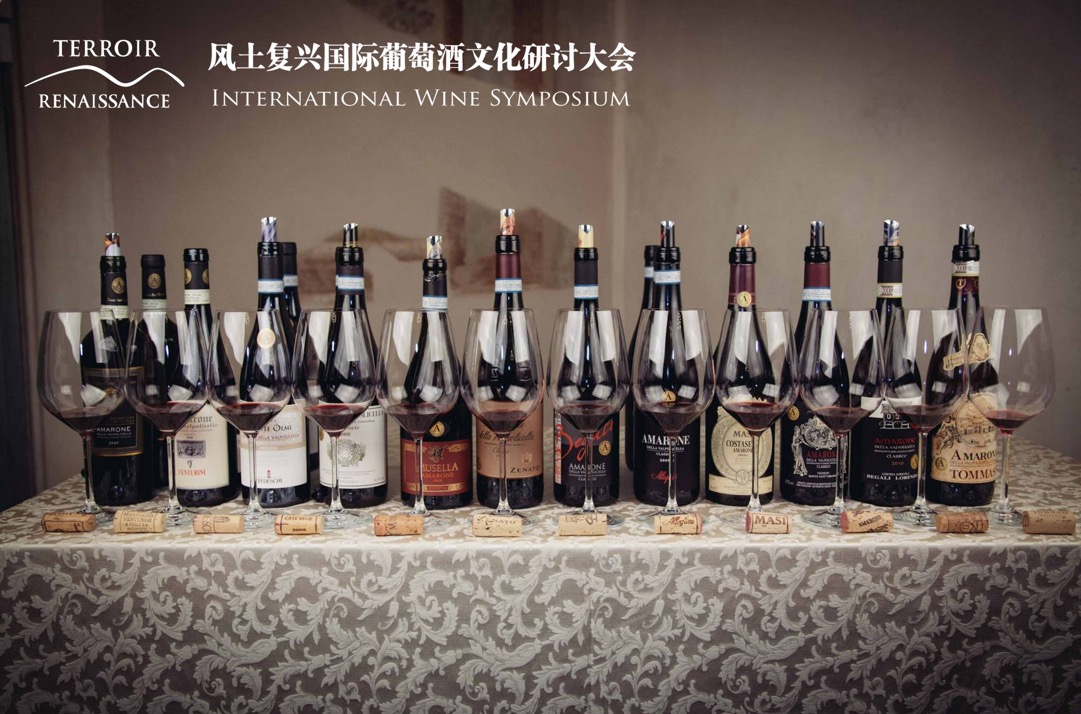
04 Masterclass: Decode Terroir of Amarone Historical Familly with Ian D’Agata and Sabrina Tedeschi
Amarone della Valpolicella is an area that impresses all the lovers of Italian wines. The Amarone is the favorite wine for many wine lovers with its rich, complex, full-bodied and deep flavor.
At the third international wine symposium held from November 30th to December 2nd in 2018, the world-famous authority figure of the Italian wine Ian D’Agata and Ms. Sabrina Tedeschi, the chairman of Le Famiglie Storiche and the owner of the Tedeschi that is famous for its Amarone, will together bring a rare master class focusing on the top terroir of the Amarone for Chinese wine lovers. This is an excellent opportunity for lovers of Italian wines, don’t miss it!
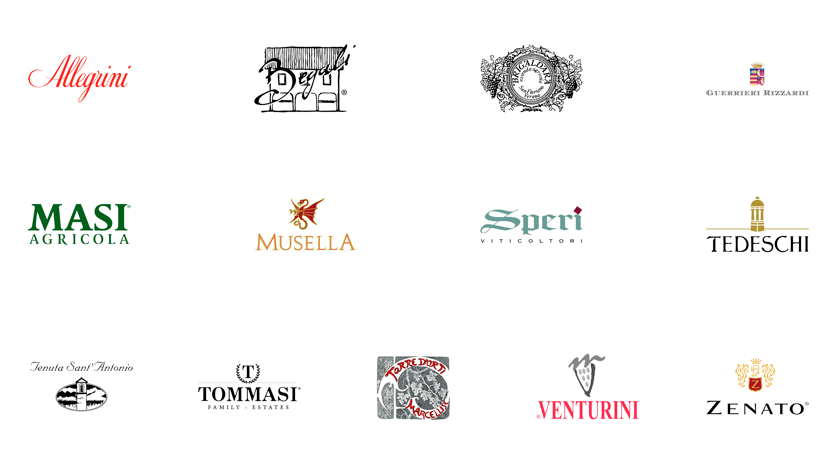
The world famous wine critic Ian D’Agata is a familiar figure for lovers of Italian wines, his authority in the Italian wine field is unquestionable. As an outstanding wine writer who has persisted in 25 years of hard work, he has been awarded “the Most Outstanding Wine Writer of Italy” for many times.
Ms. Sabrina Tedeschi is the current chairman of Valpolicella’s historic alliance (Le Famiglie Storiche), one of Italy’s most famous regions, and the owner of the Tedeschi that is famous for its Amarone. Le Famiglie Storiche is the alliance of Amarone established in Valpolicella in 2009. This alliance clearly opposes the mass production and business models, it is composed of 13 local famous wineries: Allegrini, Begali, Brigaldara, Guerrieri Rizzardi, Masi, Musella, Speri, Tedeschi, Tenuta Sant’Antonio, Tommasi, Torre D’Orti, Venturini and Zenato.
At the 2018 international wine symposium, we are honored to invite Mr. Ian D’Agata and Ms. Sabrina Tedeschi to give a master class focusing on the top terroir of the Amarone. Each of the 13 members of the alliance has come up with its own flagship Amarone. These 13 Amarone’ styles vary greatly, perfectly showing the diversity of the terroir. Through a combination of theory and practice, we will explore Valpolicella, the land that gave birth to Italy’s top wines, study some important local grape varieties that interpret the terroir, and decode the mystery behind the fascinating Amarone wine.
List of Wines
1.Allegrini Amarone della Valpolicella DOCG Classico 2014
2.Begali Monte Ca’ Bianca Amarone della Valpolicella DOCG Classico 2013
3.Brigaldara Case Vecie Amarone della Valpolicella DOCG 2012
4.Guerrieri Rizzardi Villa Rizzardi Amarone della Valpolicella DOCG Classico 2011
5.Masi Campolongo di Torbe Amarone della Valpolicella DOCG Classico 2011
6.Musella Amarone della Valpolicella DOCG Riserva 2012
7.Speri Amarone della Valpolicella DOCG Classico Vigneto Monte Sant’Urbano 2013
8.Tedeschi Capitel Monte Olmi Amarone della Valpolicella DOCG Classico Riserva 2011
9.Tenuta Sant’Antonio Campo dei Gigli Amarone della Valpolicella DOCG 2010
10.Tommasi Ca’ Florian Amarone della Valpolicella DOCG Classico Riserva 2010
11.Torre d’Orti Amarone della Valpolicella DOCG Classico 2015
12Venturini Campomasua Amarone della Valpolicella DOCG Classico 2012
13.Zenato Amarone della Valpolicella DOCG Classico Riserva 2011
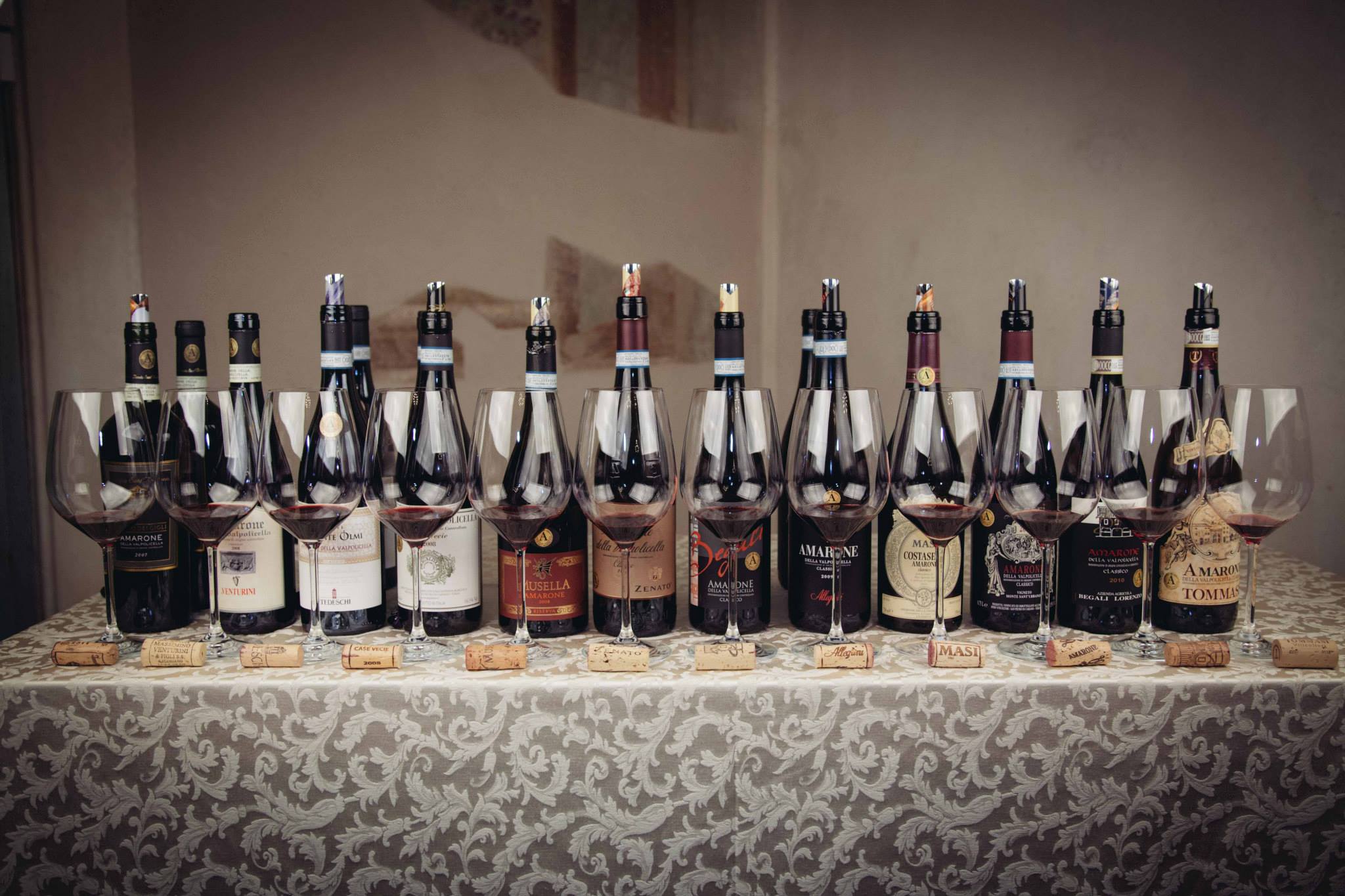
Masterclass: Decode Terroir of Amarone Historical Familly with Ian D’Agata
Time: 30 November 2018, Friday 15:30-17:00
Address: Multi-function Hall, 3rd Floor, The St. Regis Shanghai Jing’an, No.1008, West Beijing Road
Price: Early bird ticket 1790 RMB / person, a pair of tickets 3380 RMB
(35 places only for early bird price)
Original price 2090 RMB/ person
Speaker: the world famous wine critic Ian D’Agata, the chairman of Le Famiglie Storiche Sabrina Tedeschi
Language: English, on-site interpretation into Chinese
Registration: Click here to register>>
*There’re no printed copies of the master class tickets. Once the purchase is finished, please keep the e-ticket for admission.
About Amarone della Valpolicella
Amarone is produced in Valpolicella, a sub-region of Veneto in northeastern Italy. It is a dry wine made from dried grapes. It is known for its extreme concentration and complexity, and its aging potential is extremely strong. Valpolicella is dominated by a dry, cool continental climate. The soil in this area contains gravel and calcareous limestone, but some areas in the east also have special volcanic rocks. Good weather and soil conditions provide an excellent basis for the vinification of Amarone.
“Amaro” literally means “bitter” in Italian. It is said that Amarone was born thanks to a beautiful mistake. The first popular wine in the Valpolicella was the sweet wine Recioto originated from the ancient Greek. One day, a barrel of Recioto was missed, the fermentation was not terminated in time, thus most of the sugar in the grape juice that should have been retained was converted into alcohol, so the first dry and full-bodied Amarone was born. Although this is a dry, full-bodied red wine, it was indeed a “bitter” wine in the era of sweetness, that’s why it was named Amarone.
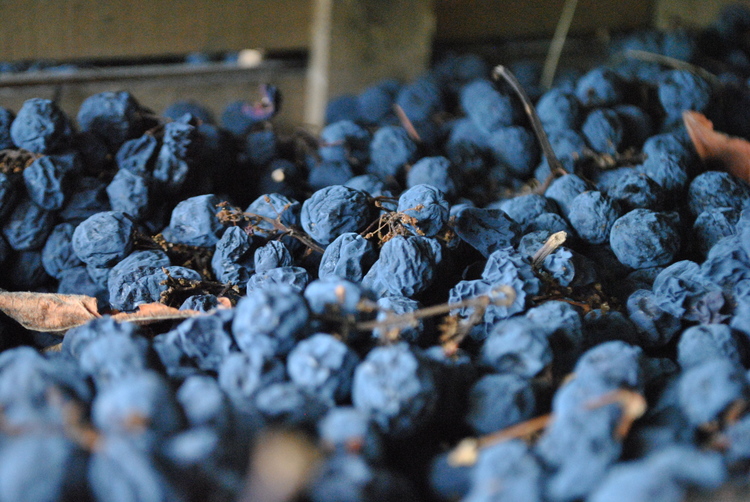
This dry red wine made from semi-dried grapes is usually made from a mixture of different Italian native grape varieties, such as Corvina, Corvinone, Rondinella, Molinara and Croatina, especially Corvina.
Corvina is considered as the skeleton of Amarone, which usually accounts for 60% to 80% of the blend. It gives the wine structure and aroma. Il can bring much fresh fruit aroma, such as cherries, plums and blackcurrants. Moreover, this aroma will not easily disappear even after a long period of cask-aging, and will evolve into a more complex aroma, like dried plums and cherry jam. The amazing thing is that the Corvina variety can only play its best quality in Valpolicella.
Rondinella is relatively small and round, and generally accounts for 20%-30% of the blend. Due to its high sugar ratio, its proportion in Recioto will be higher.
Molinara is also one of the important varieties for the traditional Amarone, which generally accounts for 0%-10% of the blend.
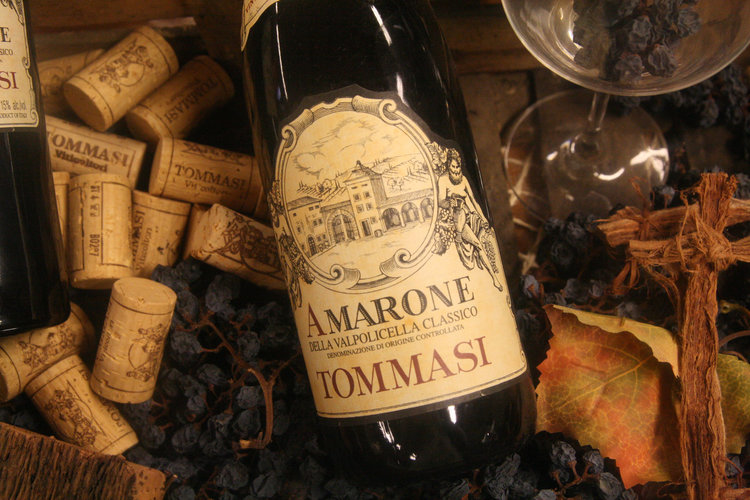
Many people may think that Amarone wines have similar flavors, but in fact it has a wide range of styles, which can be roughly divided into traditional style and modern style. The traditional style adheres to the traditional brewing method and style, insists on using natural techniques such as natural air-drying, natural yeast and traditional large oak barrels. The skin contact often lasts for several months and then experiences a long period of barrel and bottle ripening. Because it is generally fermented by high-sugar grapes, it usually contains more alcohol, its alcohol content is generally surpasses 15%. The structure is huge and complex, the body is strong, it’s full of various fruit and Chinese herbal scent, and the aroma of nuts, licorice and dark chocolate.
While the modern style pursues a fresher fruity taste, so the drying process is relatively shorter in order to retain more moisture. Some of the modern wineries of high quality use some small oak barrels to soften the tannins. Compared with the traditional style, the modern way does not need a long period of bottle aging for tasting.
Whether it is traditional or modern, they all have high requirements for the quality of the grapes. A bottle of Amarone needs more grapes, the winery needs more time, space and manpower. Therefore, Amarone is quite precious and the price is relatively high. In this master class, you will experience 13 Amarone with different styles to help you develop a deeper understanding of Amarone.
Speaker

Ian D’Ataga
Ian D’Agata is a multi-award winning author who has been speaking and writing about wine for over thirty years. His Native Wine Grapes of Italy (University of California Press) is considered the bible of Italian wine and was the Louis Roederer International Wine Awards Book of the Year in 2015 and one of the top wine books of the year for the LA Times, the Financial Times and the New York Times. A former Contributing editor of Decanter, he is currently the Senior editor of Vinous web wine magazine and the Italian correspondent for China’s TasteSpirit and the Creative director of Collisioni’s Wine and Food Project (Collisioni is Italy’s largest music, literature, wine and food festival), as well as the Director of the Indigena festival (devoted to Italy’s native grapes and wines) both held annually in Barolo, and the Scientific director of an international wine and food school, the Italian International Indigenous Center Wine and Food Studies (3iC). He is also the Scientific advisor of Vinitaly, Europe’s largest wine fair.
Intensely devoted to the research and study of native grapes, he was named an official member of Italy’s prestigious Accademia della Vite e del Vino in 2017 and has collaborated over the years with numerous universities. He has taught culture of Italian wine and tasting at New York University’s Master’s Program in Food Sciences, lectured in wine marketing for the University of Rome-Tor Vergata and was Research Professor of Oenology at the University of New Mexico. Twice nominated as the best wine journalist in Italy by the Comitato Grandi Cru d’Italia (the only person to have ever won both in the “young” and “absolute” categories), other awards for his wine writing and teaching include the 2018 VQA Promoter award and the 2017 Cuvée Award of Excellence for wine writing and promotion (both from Canada), the Medaglia Cangrande in 20 from Italy’s Friuli Venezia Giulia region, and being nominated in 2016 by Les Plumes d’Or (as voted by France’s wine makers and star chefs) as one of the world’s eight most important and influential wine writers. In 2019 he will release two brand new books, Italy’s Native Wine Grape Terroirs (published by University of California Press) and Barolo and Barbaresco: Listening to the Voice of Nebbiolo in the Langhe (co-authored with Michele Longo and Lingzi He, two of his best students he has successfully mentored over the years). In 2019, he was named Vice President of the International Terroir Council.

Sabrina Tedeschi
President of Historic Families, one of the top 10 outstanding women of Italian wines, and the owner of Tedeschi. Tedeschi is a famous winery of Amarone with a history of over 200 years. After taking over the winery from his father, Sabrina runs a familial winery with her sister Antonietta and her brother Riccardo, she is in charge of winemaking and market expansion.
About Le Famiglie Storiche
Amarone’s historic Le Famiglie Storiche is a wine protection alliance that promotes and protects Amarone, one of Italy’s finest wines, it opposes the popular business model of wines and adheres to the philosophy of excellence. The Alliance promotes the quality of its members’ wines in a number of ways, one of which is the finer division of wine producing areas and vineyards based on geographical location and terroir. In addition, in order to avoid the outflow of bulk wine, which can lead to the interruption of the winery’s supervisory control of the wine’s quality, the alliance also clarified the necessity of the bottling in the production area for member wineries.
The Alliance is now composed of 13 distinguished wineries, including Allegrini, Begali, Brigaldara, Guerrieri Rizzardi, Masi, Musella, Speri, Tedeschi, Tenuta Sant’Antonio, Tommasi, Torre D’Orti, Venturini and Zenato. Among them, Tedeschi, Allegrini, Masi, Tommasi, and Zenato are all famous. Fortunately, every member of the alliance will come up with their own flagship Amarone in this master class, letting everyone know more about this fascinating wine from a multi-dimensional perspective.
Masterclass: Decode Terroir of Amarone Historical Familly with Ian D’Agata
Time: 30 November 2018, Friday 15:30-17:00
Address: Multi-function Hall, 3rd Floor, The St. Regis Shanghai Jing’an, No.1008, West Beijing Road
Price: Early bird ticket 1790 RMB / person, a pair of tickets 3380 RMB
(35 places only for early bird price)
Original price 2090 RMB/ person
Speaker: the world famous wine critic Ian D’Agata, the chairman of Le Famiglie Storiche Sabrina Tedeschi
Language: English, on-site interpretation into Chinese
Registration: Click here to register>>
*There’re no printed copies of the master class tickets. Once the purchase is finished, please keep the e-ticket for admission.